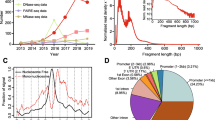Abstract.
The SET domain is a 130-amino acid, evolutionarily conserved sequence motif present in chromosomal proteins that function in modulating gene activities from yeast to mammals. Initially identified as members of the Polycomb- and trithorax-group (Pc-G and trx-G) gene families, which are required to maintain expression boundaries of homeotic selector (HOM-C) genes, SET domain proteins are also involved in position-effect-variegation (PEV), telomeric and centromeric gene silencing, and possibly in determining chromosome architecture. These observations implicate SET domain proteins as multifunctional chromatin regulators with activities in both eu- and heterochromatin – a role consistent with their modular structure, which combines the SET domain with additional sequence motifs of either a cysteine-rich region/zinc-finger type or the chromo domain. Multiple functions for chromatin regulators are not restricted to the SET protein family, since many trx-G (but only very few Pc-G) genes are also modifiers of PEV. Together, these data establish a model in which the modulation of chromatin domains is mechanistically linked with the regulation of key developmental loci (e.g. HOM-C).
Similar content being viewed by others
Author information
Authors and Affiliations
Rights and permissions
About this article
Cite this article
Jenuwein, T., Laible, G., Dorn, R. et al. SET domain proteins modulate chromatin domains in eu- and heterochromatin. CMLS, Cell. Mol. Life Sci. 54, 80–93 (1998). https://doi.org/10.1007/s000180050127
Issue Date:
DOI: https://doi.org/10.1007/s000180050127




